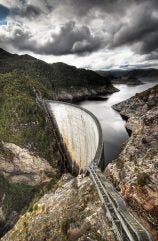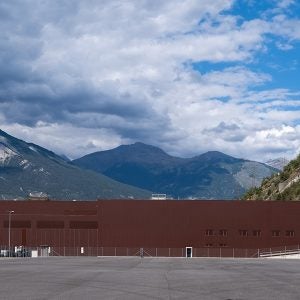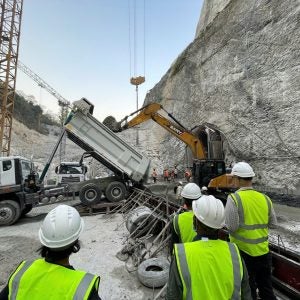
Earlier this week, Hydro Tasmania celebrated the 50th anniversary of the Gordon Dam, marking a significant milestone in the state’s hydropower history. The final bucket of concrete was poured on 25 November 1974, completing Australia’s largest arch dam in Tasmania’s southwest.
Acting CEO Erin van Maanen highlighted the dam’s importance, describing it as a symbol of engineering excellence that positioned Tasmania as a global leader in renewable energy.
“Today we honour the people who brought this visionary project to life. Their legacy is the renewable energy that powers the lives of Tasmanians and underpins our economy,” Ms van Maanen said.
Gordon Dam, together with Lake Gordon and Lake Pedder, forms Hydro Tasmania’s largest water storage system. The Gordon Power Station supplies about 13% of Tasmania’s electricity annually. Van Maanen emphasized the system’s strategic importance, noting that these multi-seasonal storages allow for long-term water management and energy security.
“These are multi-seasonal storages, we can build them up and access water over years. They play a very important role in Tasmania’s hydropower system and are critical to meeting the growing demand for energy in Tasmania and providing energy security during dry periods,” she said.
Phil Reed, a crane dogman during construction, directed both the first and last concrete pours. Reflecting on the project, he said, “It was fantastic watching that last bucket be poured at Gordon. Everyone had worked so hard for so long – we’d been pouring concrete for almost three years.”
Ms van Maanen also addressed the environmental impact of the Gordon-Pedder Scheme, acknowledging the controversy surrounding the flooding of Lake Pedder and its lasting significance.
“The lessons resonate today in how Hydro Tasmania prioritises and cares for the environment, and how we engage with the community,” she said.
The Gordon Dam, designed by chief engineer Dr. Sergio Giudici, stands 140 meters tall, making it the tallest arch dam in Australia. Its construction involved hundreds of workers, including many skilled migrants, who also built an 80-kilometer road through rugged terrain to access the site. Strathgordon Village was established to house up to 2,000 workers and their families, complete with amenities like a shopping center and Tasmania’s only heated swimming pool at the time.






